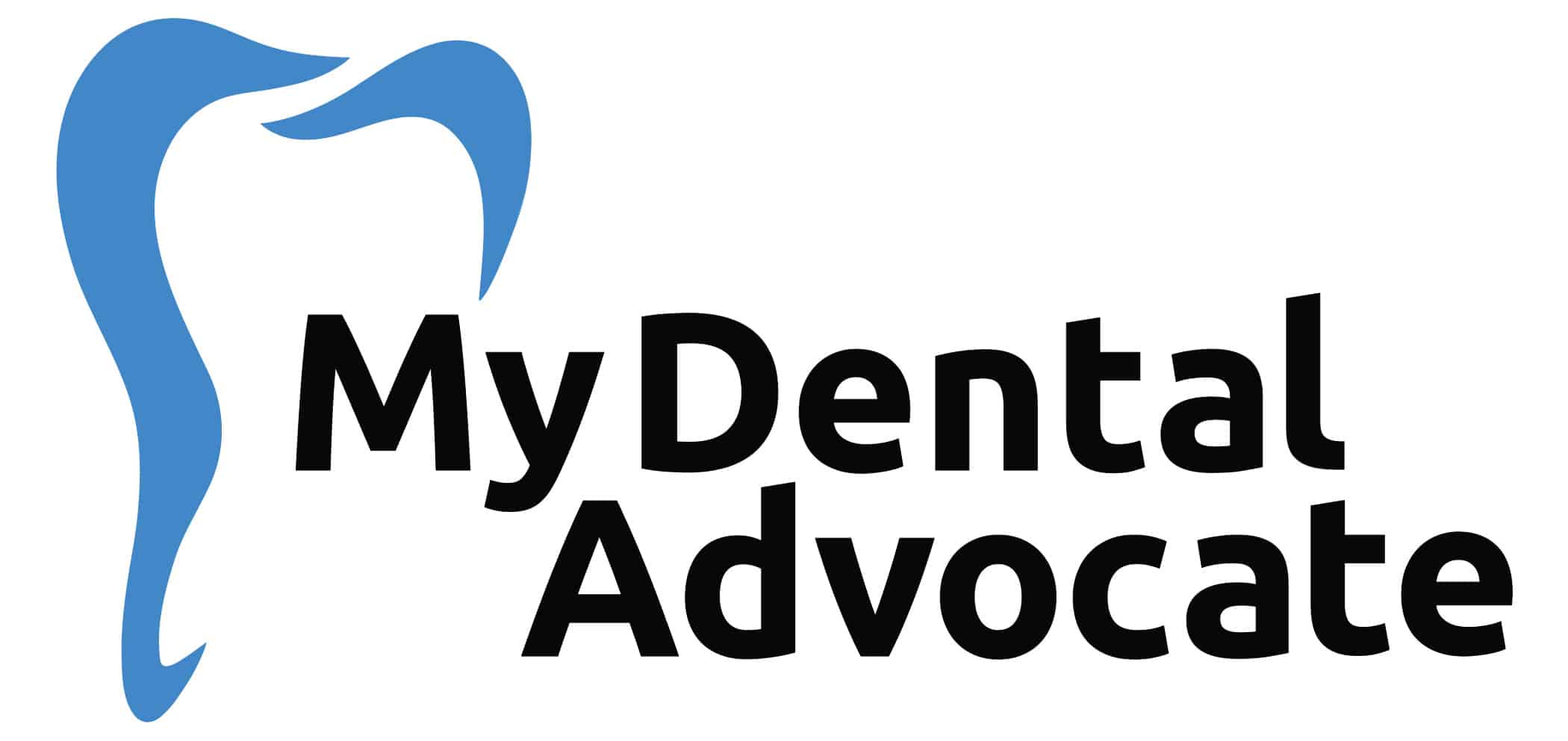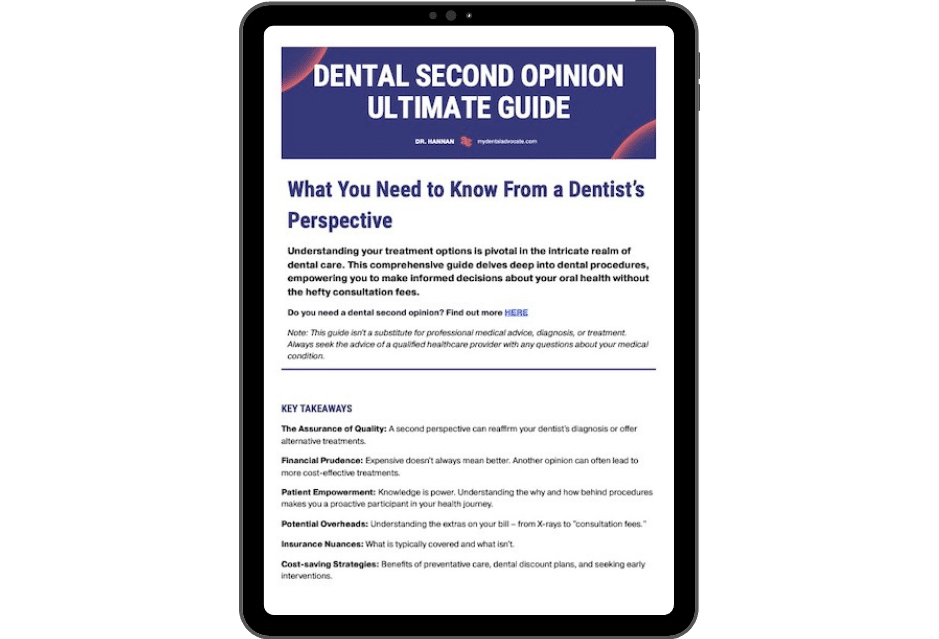Tooth Extraction and Implant Timeline (What to Expect)
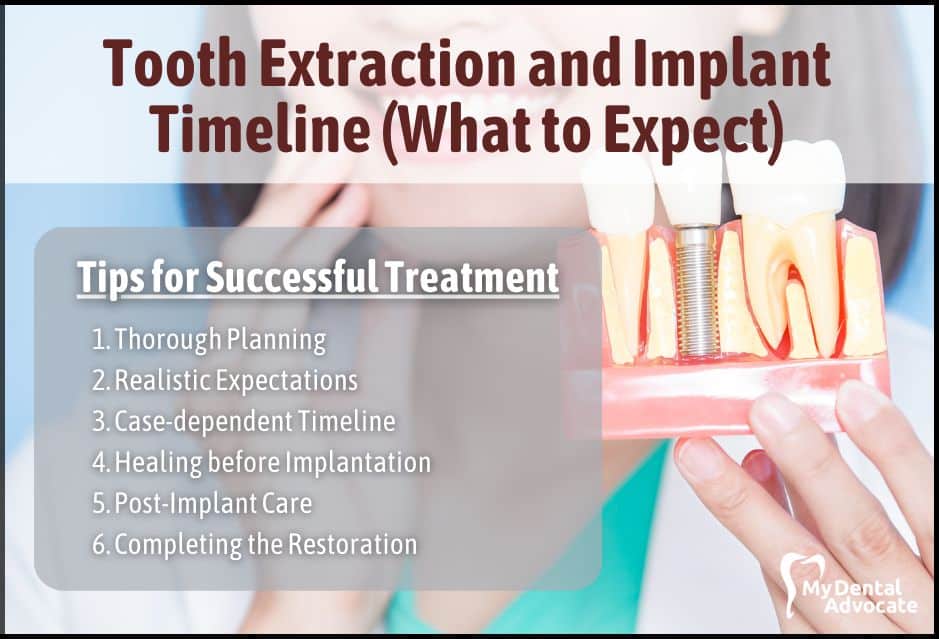
Whether bidding goodbye to a damaged tooth or welcoming a durable titanium implant, understanding the journey ahead can make all the difference.
This article will demystify the process, tailored to your unique situation, and offer insights to help you confidently navigate extraction to implantation.
Remember, while the journey may span weeks to months, each step brings you closer to a healthier, more radiant smile.
Read on to learn how you can benefit from this transformative dental journey and ensure a smoother, more predictable transition toward a renewed you.
Need Dental Advice? Ask Dr. Hannan!
Consultation & Treatment Plan
Start your dental transformation journey with an initial consultation, where your dentist evaluates your oral health and crafts a custom treatment plan.
This vital step allows your dentist to assess if you’re an ideal candidate for tooth extraction and implants while considering your overall health and medications to ensure a successful procedure.
The consultation is also your roadmap to the treatment, outlining necessary preparatory steps like bone grafts or extractions and providing a timeline.
In addition, it’s a chance to raise any queries and understand what lies ahead.
Post-consultation, you’ll schedule your procedure(s), which may span one or several appointments, depending on the case complexity. Adherence to the treatment plan, including follow-up visits for progress monitoring, is crucial for the implant’s successful integration into your jawbone.
In essence, consultation and adherence to the treatment plan pave the way for a successful tooth extraction and implant process, promising the best outcome for your oral health.
Pre-Extraction Preparations
Prepare for your tooth extraction journey with these six essential steps.
Recommendations
- Rest Up: Being well-rested before your tooth extraction aids comfort and recovery. Consider taking a break from work or school for a smoother healing process.
- Quit Smoking: Stop smoking before the extraction to speed up healing and reduce complications. Continue to avoid smoking post-procedure for the best outcome.
- Maintain Oral Hygiene: Keep your mouth clean, particularly around the extraction site, to prevent infection and promote faster healing.
- Antibiotics: If you have a higher infection risk due to certain health conditions, your dentist may prescribe antibiotics beforehand.
- Anesthesia Options: Discuss with your dentist the best anesthesia for your case, based on the extraction’s complexity. You’ll be informed about the risks and benefits to help you decide.
- Pre-Procedure X-Ray: An X-ray prior to the extraction allows your dentist to plan effectively and anticipate any challenges.
Adhering to these steps sets the stage for a smoother, more comfortable tooth extraction experience.
Recommended Reading: 7 Symptoms of Perforated Sinus After Dental ImplantExtraction Procedure
Navigating a tooth extraction might seem daunting, but knowing the process can quiet your nerves. Here’s a brief overview of the two primary types of extractions:
Simple Extraction: Applicable for visible, non-impacted teeth, this procedure starts with local anesthesia to numb the area. The dentist then uses an elevator to loosen the tooth and forceps to extract it. Post-procedure, gauze will help control bleeding and form a clot.
Surgical Extraction: Applicable for impacted or broken teeth, this more complex procedure requires general anesthesia or deep sedation. An incision is made in your gum, followed by a drill to remove any obstructing bone, before extracting the tooth with an elevator and forceps. Post-extraction, gauze and potentially stitches aid in controlling bleeding and healing.
Recommended Reading: Dental Bone Graft Aftercare (Tips for Optimal Healing)Expect some bleeding, swelling, and pain post-extraction, manageable with gauze and prescribed pain relievers. It’s crucial to avoid rinsing or using a straw for the first 24 hours to prevent dislodging the clot and causing a dry socket.
Seek immediate dental attention if you notice severe pain, pus, or infection signs like fever or chills. With diligent aftercare, recovery typically spans a few days to a week.
Post-Extraction
Post-extraction, the correct aftercare is pivotal for promoting healing and safeguarding the extraction site. Here are some critical steps to foster a swift recovery.
Recommendations
- Recovery Timeline: Healing from simple extractions typically takes 7 to 10 days. Avoid smoking to prevent delays and complications. Immediately inform your dentist about excessive bleeding, severe pain, or fever.
- Hygiene: Rinse the extraction area gently with antimicrobial mouthwash 2-3 times daily. Avoid brushing the site directly until your dentist approves. Brush and floss the rest of your mouth as usual.
- Diet: Stick to soft foods like soup, yogurt, and mashed potatoes right after the extraction. Stay away from hard, crunchy, or spicy foods that might irritate the wound.
- Cold Compresses: Use cold compresses on the affected area for 10-20 minutes at intervals to reduce swelling and discomfort.
- Saline Rinses: After about a week, when the clot is stable, warm salt water rinses can help with healing and reducing inflammation.
- Avoid Spitting and Straws: For the initial days, don’t spit or use straws as they can dislodge the blood clot. Let saliva and blood flow out naturally and use a tissue to gently dab the area.
These tips can enhance your aftercare and expedite recovery post-tooth extraction.
Recommended Reading: The Dairy Dilemma: Can Consuming Dairy Products Impact Dental Implant Success?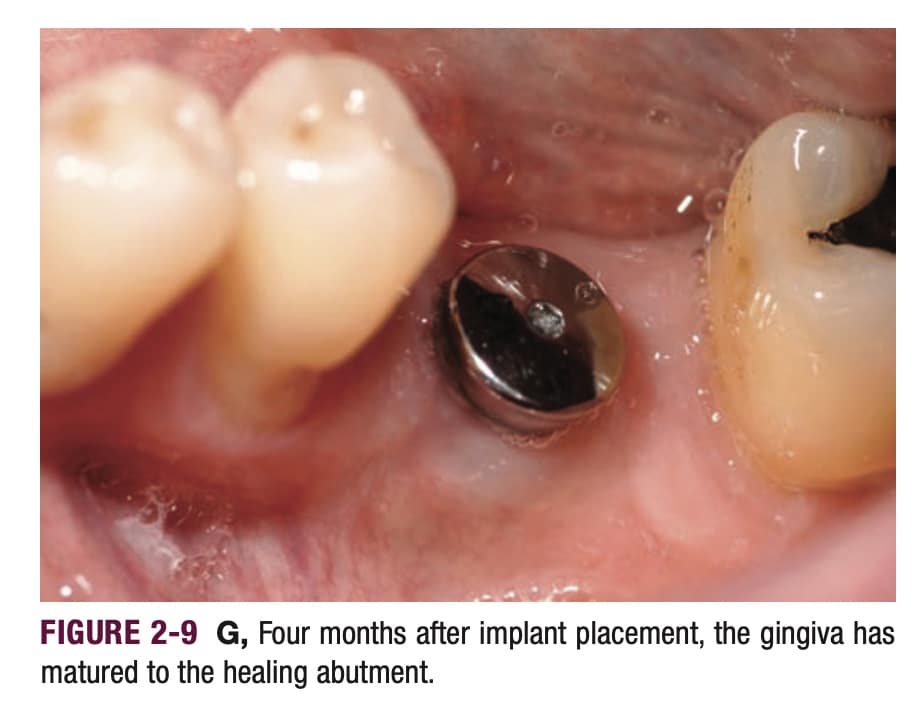
Bone Grafting & Implant Placement
Post-extraction, bone grafting and implant placement are vital phases in your journey toward a healthy smile. Here’s a simplified overview.
Highlights
- Bone Grafting: If your jawbone lacks density for an implant, a bone graft may be necessary. This process, using natural or synthetic bone, can take weeks to a year to heal, requiring a special diet and limited activities for best results.
- Implant Placement: After graft healing, a titanium post is inserted into your jawbone. This two-hour procedure may involve local anesthesia or sedation.
- Osseointegration: The implant fuses with your jawbone, a process called osseointegration. It takes up to 7 months for the upper jaw and 5 months for the lower jaw.
- Healing Abutment: A healing collar is attached during osseointegration to protect the implant and aid healing. Your dentist will provide specific care instructions.
By ensuring adequate bone density for the implant and allowing proper healing and osseointegration, you’re setting the stage for a robust, stable, and functional new tooth that can last for years.
Recommended Reading: 12 Best Dental Implant Brands 2024 (Dentist’s Perspective)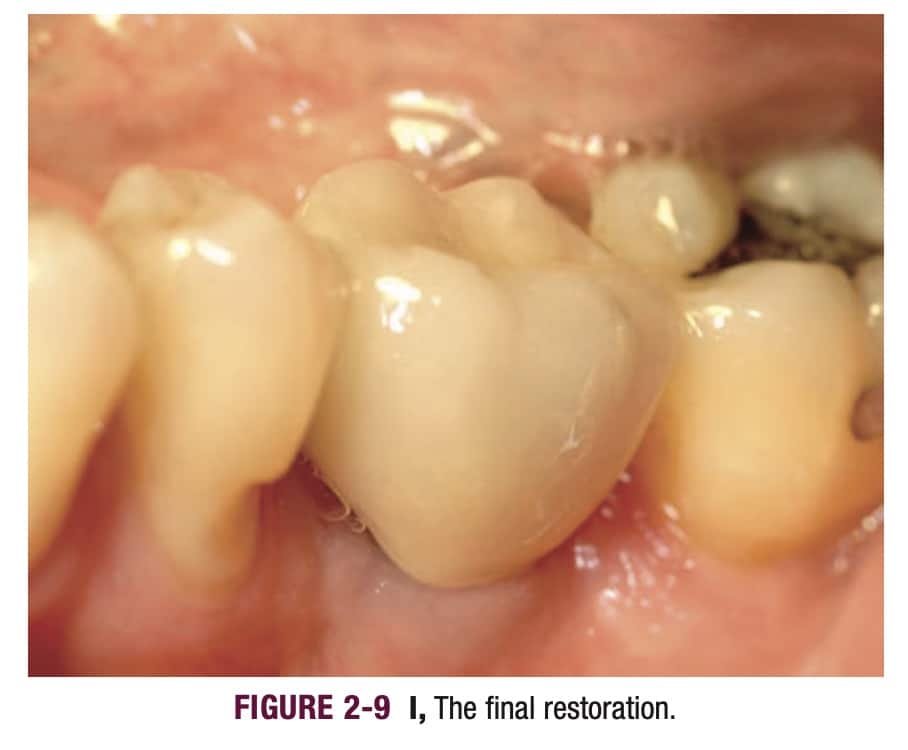
Abutment Placement & Crown Attachment
After implant surgery, the abutment placement and crown attachment are the following steps. Here’s an easy-to-understand breakdown.
Highlights
- Abutment Placement: The abutment, typically titanium or zirconia, is tailored to your implant. Under local anesthesia, your oral surgeon attaches it to the implant.
- Crown Attachment: The prosthetic crown, made of porcelain or ceramic, is fixed to the abutment. This part, resembling a natural tooth, is attached without anesthesia. Your dentist checks the crown’s fit and color before securing it.
Considerations
- Custom fabrication of the abutment and crown to match your natural teeth may require some time.
- You may need a temporary crown while your permanent one is being made.
- With the proper care and maintenance, your abutment and crown are designed to last for many years.
Recovery Process & Timeline
After your tooth extraction or dental implant surgery, proper aftercare is crucial to promote healing and prevent complications. Here is what you can expect during the recovery process and timeline:
Tooth Extraction Recovery
- Day 1-2: Expect bleeding, swelling, and discomfort. Bite on gauze for 30-45 minutes to aid blood clot formation.
- Day 3-4: Pain and swelling should begin to decrease. Rinse with salt water gently to clean the extraction area.
- Day 5-7: Gently brush your teeth, avoiding the extraction site. Stay away from smoking, using straws, and eating hard or crunchy foods.
- Day 7-10: Healing should progress, allowing you to gradually return to normal activities. Still, avoid heavy exercise for a few more days.
Most simple extractions should heal within 7 to 10 days, but full recovery may take several weeks. Your dentist will advise you on when to resume brushing and flossing normally.
Dental Implant Recovery
- Day 1-2: Expect bleeding, swelling, and discomfort. Bite on gauze for 30-45 minutes to encourage blood clot formation.
- Day 3-4: Pain and swelling should begin to lessen. Gently rinse with salt water to maintain cleanliness around the implant site.
- Day 5-7: Start brushing your teeth gently, avoiding the implant area. Refrain from smoking, using straws, and eating hard or crunchy foods.
- Week 1-2: Healing should be underway, allowing you to gradually return to normal activities. Continue to avoid strenuous exercise for a bit longer.
- Week 6-12: Bone integration around the implant should be happening, securing it in place. Your dentist will check the progress and determine the right time for attaching the prosthetic tooth.
The healing process for dental implants can take several months, but the result is a permanent, natural-looking tooth that can last a lifetime.
Bone Healing & Growth
Bone healing and growth are crucial to tooth extraction and dental implant procedures.
Here’s a simplified rundown:
Tooth Extraction: Post-extraction, a blood clot forms in the socket, laying the groundwork for new bone growth over several weeks. Your dentist might suggest a bone graft to encourage healing and prevent bone loss.
Dental Implant: The titanium implant post is biocompatible, allowing it to fuse with the surrounding bone in a process known as osseointegration—taking several months. A bone graft may be recommended to ensure sufficient bone support for the implant.
Complications & Risks
While tooth extraction and implant surgery are standard procedures, they carry certain risks and complications. It’s crucial to comprehend these before proceeding with surgery.
Highlights
- Infection: A common post-surgery risk, it happens when bacteria enter the surgical site. Prevent it by following your dentist’s care instructions. Watch for fever, swelling, or pus, and contact your dentist if these occur.
- Bone Loss: This can happen after tooth loss, especially from gum disease. The bone supports teeth, and its loss can lead to implant failure. A bone graft may be suggested.
- Implant Failure: While rare, failure can result from infection, bone loss, or rejection. Choosing an experienced periodontist or oral surgeon can reduce this risk.
- Bleeding and Swelling: Normal after surgery. Manage bleeding with gauze and pressure, and use ice packs for swelling.
- Fever and Pain: Common symptoms post-surgery. Your dentist might prescribe antibiotics and painkillers. Always follow their medication advice.
- Anesthesia: Used for pain-free surgery. Inform your dentist about any allergies or health conditions that might affect anesthesia use.
- Smoking: Increases the risk of complications and slows healing. Quit smoking before and after the procedure for better outcomes.
While these procedures carry certain risks, choosing a proficient periodontist or oral surgeon and following their post-operative care instructions minimizes these risks.
Alternatives to Implants
If dental implants aren’t a suitable solution for you, or if you’re reluctant to pursue them, there are several viable alternatives.
Alternative Options
- Dental Bridges: A popular alternative to implants, bridges replace missing teeth and are anchored to neighboring teeth. Made from porcelain or ceramics, they can last many years with proper care.
- Dentures: These removable replacements for missing teeth come in various materials like acrylic, porcelain, or metal. More affordable than implants, dentures may not offer the same level of comfort or appearance.
- Orthodontic Solutions: For crowded teeth or other alignment issues, braces or clear aligners can be better options than implants. They improve teeth alignment and overall oral health.
- Restorative Procedures: Fillings, crowns, or root canals might be preferable for damaged or decayed teeth, helping to restore structure and prevent further issues.
Dental implants are not the only option for tooth replacement. Depending on your unique needs and circumstances, a variety of alternatives exist. Consulting with your dentist is the best way to determine the most suitable solution for you.
My Experience & Expertise
As an experienced dentist, I can attest to the significance of a well-devised timeline for these treatments.
Highlights
- Thorough Planning: Successful tooth extraction and implant procedures start with detailed planning. This includes a full dental health assessment, X-rays, and other tests.
- Realistic Expectations: Understand that the timeline for tooth extraction and implant procedures varies. It can take several months to over a year, depending on case complexity.
- Case-dependent Timeline: Factors like case complexity, implant type, and your dental health affect the procedure’s timeline.
- Healing before Implantation: Often, it’s best to allow the extraction site to heal fully before placing the implant, although simultaneous procedures are possible in some cases.
- Post-Implant Care: After implant placement, it takes months for it to integrate with your jawbone. Maintaining excellent oral hygiene during this period is crucial for success.
- Completing the Restoration: Once the implant integrates, your dentist will fit an abutment and crown, finalizing the tooth restoration.
A meticulously planned timeline for your tooth extraction and implant procedure is critical in ensuring the success of the treatment and minimizing complications.
In addition, by collaborating closely with your dental professional and maintaining stringent oral hygiene, you can enjoy a healthy, functional, and aesthetically pleasing smile for years ahead.
Need a second opinion? We can help! Learn more. Knowledge is power when cultivating healthy dental habits. The more informed you are, the better positioned you’ll be to prevent avoidable and potentially costly dental procedures for you and your family. Watch for future blog posts, where we’ll continue sharing important information, product reviews and practical advice!

About the Author
Dr. Matthew Hannan, also known as “Dr. Advocate,” is a board-certified dentist on a mission to provide accurate dental patient education. He attended Baylor University before completing dental school at UT Health San Antonio School of Dentistry. He now lives in Arizona with his beautiful wife and 4 kids. Dr. Hannan believes everyone should access easy-to-read dental resources with relevant, up-to-date dental research and insight to improve their oral health.

Connect with Dr. Hannan!

Why Does A Cavity Hurt? (5 BEST Toothache Home Remedies)
A toothache is one of the most painful things you can experience. But what makes them hurt so much? And what are the best ways to treat a toothache at home? Here are the five best dentist-approved toothache remedies…
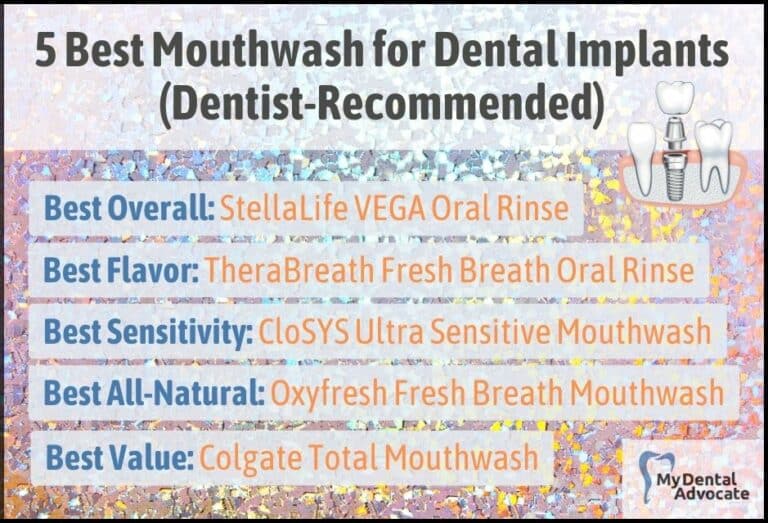
5 Best Mouthwash for Dental Implants 2024 (Dentist Recommended)
Maintaining optimal oral health is more crucial than ever for those who have decided to invest in dental implants. Dental implants, representing a significant advancement in dental technology, restore functionality and aesthetics and require particular care to ensure longevity.
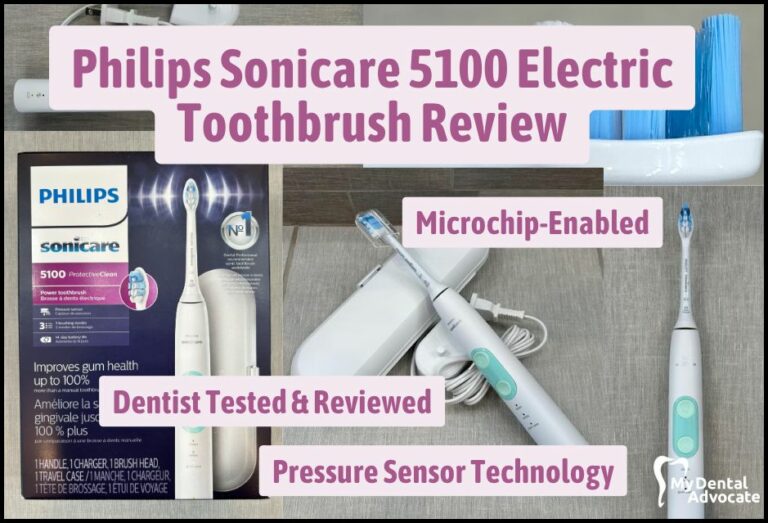
Sonicare 5100 Electric Toothbrush (Full Review)
Looking for a sparkling smile and improved oral health? Search no more! Introducing the Philips Sonicare ProtectiveClean 5100, an electric toothbrush that’s both powerful and customizable, designed to provide an unparalleled deep…
Gain Clarity with Our FREE Second Opinion Guide
Receive clear, expert second opinions online within 48 hours. Start today!
Product Reviews
Our 250+ dental product reviews (and counting), curated by an experienced dentist, are the most comprehensive online.
Toothbrush Genie
State-of-the-art chatbot designed to help you discover your perfect toothbrush in just a few simple steps!
Cavity Risk Assessment
Cutting-edge digital tool designed to evaluate your individual cavity risk based on your responses to a series of questions.
Gum Disease Assessment
Discover your gum disease risk with our quick and engaging 6-question assessment!
